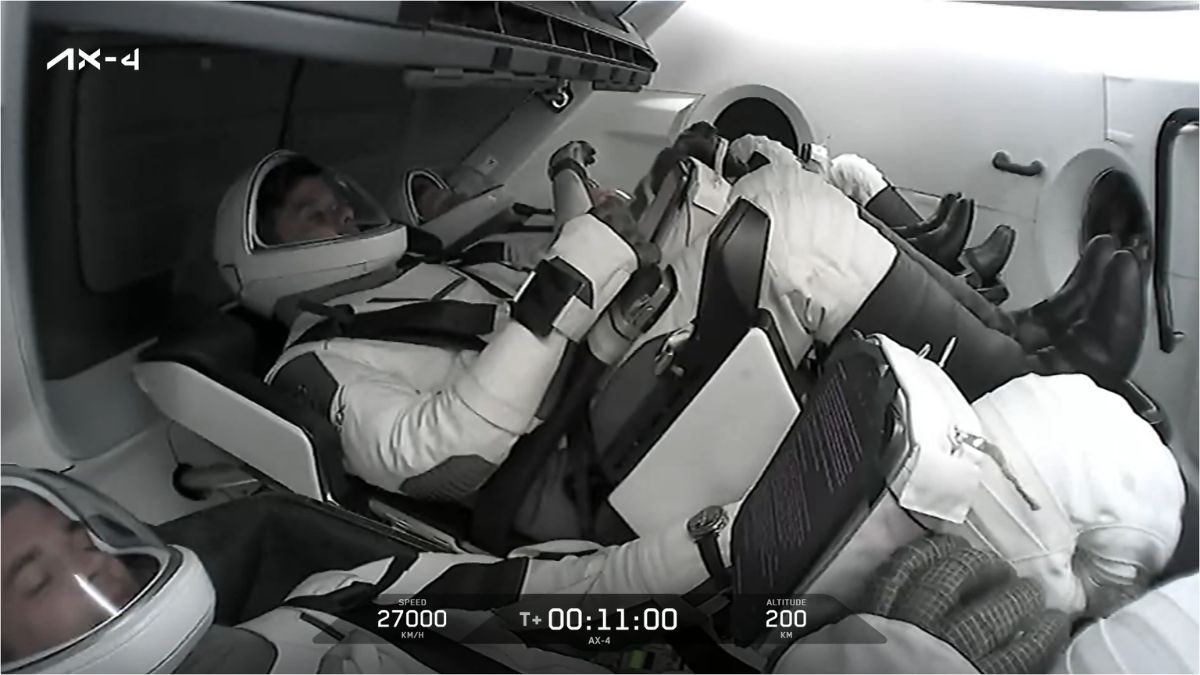Gravity shock: Why astronauts need medical rehabilitation explained
 Indian astronaut Shubhanshu Shukla (centre) and three others aboard the Dragon spacecraft after the successful launch of the Axiom-4 Mission | SpaceX
Indian astronaut Shubhanshu Shukla (centre) and three others aboard the Dragon spacecraft after the successful launch of the Axiom-4 Mission | SpaceX
When India's astronaut Shubhanshu Shukla returned from his historic 18-day mission to the International Space Station on July 15, 2025, his journey back to normal life was far from over. Despite appearing healthy and smiling as he stepped out of the SpaceX Dragon capsule, Shukla immediately began a carefully structured week-long rehabilitation program under the supervision of both Axiom Space and ISRO flight surgeons. This raises an important question: why do astronauts who seem perfectly fine need such intensive medical attention after returning from space?
The answer lies in how profoundly space changes the human body, even during relatively short missions. Without Earth's gravity affecting the human body, weight-bearing bones lose on average 1 to 1.5 per cent of mineral density per month during spaceflight, while astronauts can lose up to 20 per cent of their muscle mass in just 5 to 11 days without regular exercise. During Shukla's 18-day mission, his body underwent these same fundamental changes that affect all space travellers.
“The most immediate challenge astronauts face upon return is readjusting to gravity's relentless pull. Immediately after landing, astronauts may have problems standing up, stabilizing their gaze, walking and turning. This happens because the inner ear's balance system, which relies on gravity to function properly, becomes confused after weeks of weightlessness. When released from the pull of gravity, body systems continue to work, causing a general redistribution of fluids into the upper half of the body, and when gravity returns, the cardiovascular system must readjust to pumping blood against Earth's downward force,” explained space analyst Girish Linganna.
The rehabilitation program spans a week, and includes cardiovascular assessments, musculoskeletal tests, and psychological debriefs aimed at complete psychological recovery and data capture for future missions. Experts point out that cardiovascular assessments check how well the heart handles the transition back to pumping blood uphill against gravity. Many returning astronauts experience orthostatic intolerance, meaning their blood pressure drops dangerously when they stand up, potentially causing dizziness or fainting.
Musculoskeletal tests evaluate the condition of bones and muscles that have been operating in an environment where they barely needed to support body weight. Each astronaut returning from the space station participates in an aggressive muscle conditioning and rehabilitation program. In most cases, muscle mass and strength are fully recovered after 1–2 months back on earth. The rehabilitation exercises help retrain muscles to work against gravity again and assess whether any bones have lost dangerous amounts of density.
“The psychological component of rehabilitation is equally important. Space missions involve extreme isolation, confinement, and the constant awareness that Earth is hundreds of miles below. Sleep loss, stress related to workload, high performance expectations, and psychosocial factors all affect the body on long-duration missions. Mental health professionals help astronauts process their extraordinary experience and readjust to life on Earth, where the simple act of dropping something results in it falling to the floor rather than floating away,” added Linganna.
For astronauts like Shukla, who spent 18 days in space, the effects are relatively mild compared to those who stay for months. However, even short-duration spaceflight requires careful monitoring. Findings suggest that short-duration flights can affect muscle fibers, including their thickness, metabolism, and blood supply. The rehabilitation process serves multiple purposes beyond just helping the astronaut recover. The data collected during these assessments provides valuable insights for designing better countermeasures for future missions and helps space agencies understand how to keep astronauts healthier during longer journeys to destinations like Mars.
The week-long rehabilitation that Shukla undergoes represents decades of learning about how to help space travellers transition safely back to Earth life. It ensures that the same physical conditioning that made them capable of surviving in space can be restored for their return to gravity's domain. Without this careful reintroduction to Earth's environment, astronauts could face increased risks of injury, cardiovascular problems, or psychological difficulties that might persist long after their space mission ends.
As humanity prepares for longer missions to the Moon and eventually Mars, understanding and perfecting these rehabilitation protocols becomes even more critical. Each returning astronaut, including pioneering travellers like Shukla, contributes essential data that will help future space explorers make the journey from the stars back to solid ground safely and successfully.
Health